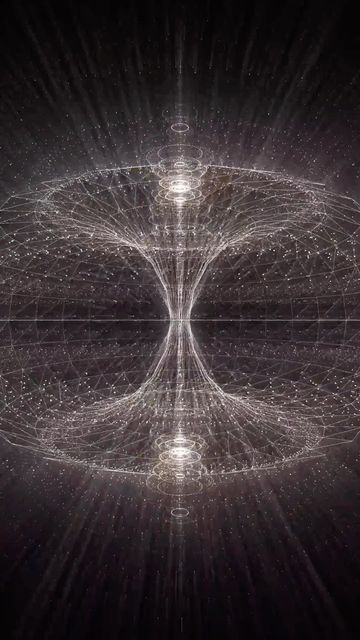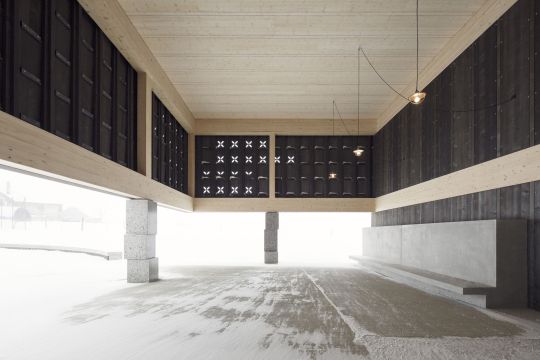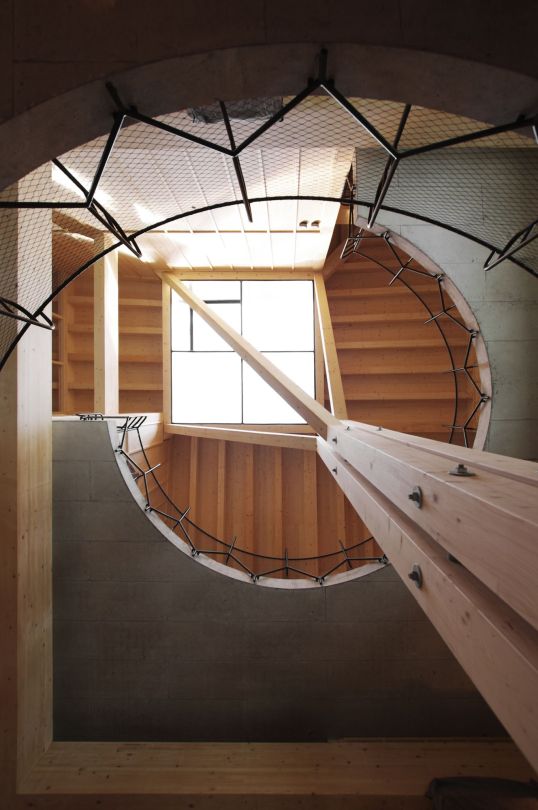#education pattern
Explore tagged Tumblr posts
Text

Otl Aicher, Europäische Metropolen, Donnerstagvorträge im Februar 1957, Ulmer Volkshochschule, Ulm, 1957 [Flat & Bound, at Integral Lars Müller GmbH, Zürich. Museum für Gestaltung Zürich]

#graphic design#typography#geometry#pattern#pedagogy#education#poster#otl aicher#ulmer volkshochschule#flat & bound#museum für gestaltung zürich#1950s
267 notes
·
View notes
Text

#pay attention#educate yourselves#educate yourself#knowledge is power#reeducate yourself#reeducate yourselves#think about it#think for yourselves#think for yourself#do your homework#do your own research#do your research#do some research#ask yourself questions#question everything#conspiracy theorists#pattern recognition#experts
472 notes
·
View notes
Text
just. A thought.
characters stepping forward to take a blow for the loved one
- the quick dart to intercept Whumper’s hand as they try to backhand Whumpee. “mmmff—” a crack.
- “what are you doing?” Blood dripping to the floor, falling to one knee
- that dark glint in their eyes that either says “don’t fucking touch them” or “no one hurts them except me”
- catching Whumper’s hand as it falls and twisting with a white knuckled grip. Think twice.
- a grunt of pain, a gasp of real fear that’s swallowed down before anyone can hear it
- turning to check on whumpee after they’ve been hurt. “Are you okay?” And whumpee only stares, their eyes wide.
- “stop.” / “no”. Guards yanking them away so Whumper can get to who they want to punish.
- whumper turning on the character who dared to stand up to them, whumpee completely forgotten. Through the blinding pain, all they can think is I can take it. They can’t.
#multiple whumpees#beating#cw blood#whump community#whump#whump writing#whump prompt#whumpblr#whump ideas#whump scenario#whump prompts#mmm just self sacrifice as a default#or as a toxic pattern#choose your fighter yk#it makes me sickkk (in a good way)#also I’m alive just. dead tired#idk how many all nighters i have left in me#and ik I shouldn’t complain about this educational opportunity#but i’m so tired#ahhh that was a rant sorry if you’ve read that far#I’m rambling about nothing important#but this is why I haven’t been online#troy talks
280 notes
·
View notes
Text

Rough pass at mr detective man
#malevolent#detective noel#not extremely pleased with the design but after ripping a Kayne design from my psyche#the ball of meat in my skull might need some rest still#but I made sure I played the diner scene 5x while I drew this so I channeled that voice HARD#also listened to the elevator scene a lot#‘so have you?’ ‘make an educated guess.’#gonna draw that shit soon#but I can’t draw Noel chastly kissing Arthur’s hand and John and Arthur blushing with nosebleeds until I figure him out#shoulders should be thicker and neck longer yes yes#eyebrows thicker too perhaps#fully drew 1930 accurate hair only to cover it with a hat#oh the woes of an artist#also hate the pattern I put on the tie why the hell did I do that
124 notes
·
View notes
Text
hello, do check out my gay shit over on redbubble tysm







+ Jacques Demy

+ horror



#redbubble#is this art idk...#moonlight#the handmaiden#bend it like beckham#y tu mama tambien#god's own country#passing 2021#the half of it#una mujer fantastica#cassandro 2023#blue jean 2022#san junipero#lgbt cinema#and then we danced#lucrecia martel#bad education#janelle monae#tessa thompson#of an age#ema 2019#120 bpm#beats per minute#first cow#summerland#is not a standout movie but love what i came up with sdkjhf#took that dang clothes pattern way too seriously#also got a couple more not in here#happy together#wong kar wai
39 notes
·
View notes
Text
Started watching 3BSkyen’s helluva reaction and while I don’t agree with certain things, he called the show sincere and self-indulgent and honestly.. that is accurate and also such a big reason to why I love it so much. (He also mentioned the thing about Marvel that I’ve mentioned before)
Honestly I can appreciate most things if you can just tell that the creator loves their product. You feel that with helluva. The creators are doing a show THEY want to do and are inviting you to witness it. It’s ultimately for them but it also resonates with people like them. I think that’s a big reason as to why I don’t mind the tonal whiplash or whatever else people like to point out makes the show lesser. Cus to me it’s just proof of them being able to do whatever they want. This show is free as fuck.. they are able to tell the story however they want to and I’m just enjoying the ride and seeing what they can come up with.
Like…I have been a movie fan for such a loong time. Especially animation. Me and my father share this hobby and we’ve both gotten very good at predicting what’ll happen just cus of pattern recognition. This makes helluva so exciting for me, cus they don’t have to follow the mold. They don’t have to use the same established tools as anyone else and therefor… I’ve never been fully sure about what they’re gonna do. Which is also why I’m perfectly fine with their use of clichés. Cus, ye sure they’re overused in general BUT they’re not usually used in this setting.
So I’m perfectly content with the classic romantic tropes and ”cringiness” because who wouldve put that in a gorey, sexually deviant show about demons in hell? Starring a gay couple too???
I don’t care what they could’ve done, I’m really only interested in what they will do. I want to know THEIR vision. I wanna know THEIR way of doing it. Nothing they’ve done has hindered me in following the story or getting to know the characters. I honestly feel like I know them really really well, so I’m really really good.
#helluva boss#stolitz#seriously i am a huge fan of creators who are selftaught#cus education usually teaches you tools and patterns that are universally used#and sometimes that can hinder creativity#there’s no wrong way to do art imo#there are just different ways#and im so invested in people who wants to try new things#brandon rogers is one of those people who i look up to for that reason#his humour doesnt always resonate with me#but by god that man just does whatever he wants and i admire that sooooo much#and i admire vivs whole journey too#cus goddamn isnt this every oc creators dream?#do be able to do something like this?#it’s so cool for her
24 notes
·
View notes
Text
updated kin list





#mine#me coded#deltarune#kris dreemurr#kris deltarune#ewlat#education with lawrence and toni#jumpcut#kendrick jumpcut#gravity falls#mabel pines#the owl house#toh#willow park#kin list#kris might b on here bcs of vibes#they're cool#all of these characters may or may not contradict each other#but that's okay#if anyone can see a pattern in these characters id love to know#i don't feel like looking for it right now
18 notes
·
View notes
Text
The real difference between British and American Edwardian-era light fiction is that American stories have college girls. The British ones have girls who went to boarding school together, but it's a different vibe. The boarding school vibe is more juvenille--our parents sent us here, we've got to sneak around under the watchful eyes of our teachers, etc.--while the college girls chose to take their education to a higher level, and there's more of a sense that they have to use it out in the world. There's more energy to it. I don't know. It's just a thing.
#someone needs to take gutenberg away from me#i stumbled on another obscure fluffy romance author#i can't overemphasize how fluffy and generic this is#but also the american-ness gives it a very different flavor#main girl gets a visit from her college friends and there's just so much more energy and independence#than you'd see in british fiction from the same era#and i realized it's a pattern#i'd never consciously considered how far ahead america was in the realm of female education#dorothy l. sayers looking on in envy#books#history is awesome
46 notes
·
View notes
Text
can i be fr for a minute?? sending abuse to people online for holding different views than you is not activism and in fact actively hurts your cause. most people are not extreme in their viewpoints, you can give them a new perspective if you're willing to spend some time explaining shit. if someone is saying something you disagree with and you rush in there to condescend to them and call them disgusting and subhuman and dont even TRY to explain calmly why their views are harmful, they're going to shut you out instantly and double down on their views.
most people are simply genuinely ignorant to the issues they're talking about - they just pick their views up from the news and the world around them and express opinions because that's what every person does. if you run in there and tell them they're scum for it, what then? if someone does that to you, are you going to think "maybe i should do some research" or are you going to think "this person is an asshole, im blocking them." a lot of you think you're activists and then refuse to do any kind of actual WORK to support your cause.
#this is not about the isr*el thing even tho thats obviously a huge issue rn#its just a pattern ive observed online#im not saying you have to be kind to people who oppress you dont twist my words#but if youre trying to support any cause and you think calling people names is going to help#youre a fucking idiot lol#people call themelves activists and pro-X cause because they called their opposition dirty c*nts online#how the hell is that meant to help anyone? theyre just going to retreat into their propaganda chambers because you proved what the leaders#of those spaces have been telling them#you can obvs block people if you dont want to deal w them but thats a neutral action. sending abuse harms ur cause.#text#like educating ignorant people is hard work! yeah! its also the entire fucking point of activisim#and if you think its too much effort then just stop pretending you give a shit tbh#like my parents managed to change our neighbour's very xenophobic stance on migrants with a calm conversation#some people will listen and some wont and shes not exactly going out to protests for migrants rights but shes not hostile anymore#and a lot of yall think that isnt good enough but let me tell you it IS good because these things take time!#unlearning things is MUCH harder than learning them in the first place and a lot of people grew up in environments that taught them#very discriminatory and conservative views and its actually not their fault. and its hard to educate yourself differently on something you#have no idea is not true. where do you start w that?
191 notes
·
View notes
Note
your blog is so addicting, and your graphics just feed my cravings for more! do you have any dividers for college life or college aesthetics? they don't need to be academia themed, but it'd be super cool to see ones outside that range and more of how college really is in our modern era :)
btw, thanks for considering my previous asks, it's super helpful and very sweet, especially because I know how busy people are <3
Hi again! I also have a few other sets that could work— anything tagged #theme: books, theme: science, theme: technology or #theme: academia honestly but I really liked these too. Thanks for the request! 💜🎃
College Life










#request answered#theme: school#theme: education#theme: college#aesthetic and themes masterlist#color: multi pattern#color: black#color: blue#color: green#color: red#dividers#graphic design#post dividers
28 notes
·
View notes
Text
Just finished the secret history and one bit I couldn't get over throughout the book was Richard's sleeping pattern / insomnia. Just, how? How is that poor man still standing? How can he just lie down and sleep some 14 hours? And then not for even longer? Kept me on the edge of my seat honestly.
#the secret history#richard papen#This is coming from someone with a ridiculously rigid sleeping pattern at this point#As in#I feel content if I sleep until 7 am#And henceforth try to go to bed around 11 pm#And this is also coming from someone with a limited knowledge of insomnia#So I do have some educating to do here#Not to even mention the various ways in which he exhibited non-existent self-care
19 notes
·
View notes
Text

Jasia Reichardt, The Computer in Art, Studio Vista, London, 1971 [baseline_]






#graphic design#computer technology#computer art#art education#visual writing#geometry#pattern#book#cover#book cover#jasia reichardt#studio vista#1970s
120 notes
·
View notes
Text

#pay attention#educate yourselves#educate yourself#knowledge is power#reeducate yourself#reeducate yourselves#think about it#think for yourselves#think for yourself#do your homework#do some research#do your own research#ask yourself questions#question everything#pattern#distraction#criminal#crimes against humanity#you decide#government corruption
97 notes
·
View notes
Text
Overview of Sacred Geometry Across Ancient Cultures
Hopefully, by the end of this series, you will have a fair understanding of what Sacred Geometry is, how it was important to different cultures, and why it is considered a key to understanding the universe and the divine. We'll explore how geometry isn't just math, but can be a very powerful spiritual tool as well.

Imagine for a moment that the world is not just random but instead has an underlying order—almost like a blueprint. That blueprint, which has been used by ancient cultures all over the world, is made up of shapes, patterns, and numbers that seem to appear everywhere in nature. This is what we call Sacred Geometry.
Now, you might ask: “Why ‘sacred’? Isn’t geometry just math?” Well, ancient civilizations didn’t just see these patterns as math—they saw them as something deeper, something connected to the divine or the spiritual nature of life. Sacred Geometry is believed to represent the building blocks of the universe, showing how everything is connected. It’s like the hidden code of creation.
Sacred Geometry teaches that by understanding these shapes and forms, we can gain insight into the order of the universe, how things work, and even our own spiritual journeys. This is why it was so important in many ancient cultures—because it was considered a key to understanding not just the physical world, but also the spiritual realm.
Now, let's explore how different ancient cultures used Sacred Geometry. Each civilization applied it in its own way, but the underlying belief was the same: these shapes and patterns weren't just useful for building things, they held spiritual meaning and could connect us to something greater.
Ancient Egypt
Let's start with one of the most famous ancient civilizations. The Egyptians were masters of geometry, and we see this clearly in their architecture–especially in the pyramids.
The Pyramids of Giza are not just incredible monuments; their construction follows geometric principles that reflect cosmic harmony. For example, the dimensions of the Great Pyramid are believed to contain the Golden Ratio—a special number, about 1.618, which appears in nature all the time. It’s in the way flowers grow, the shape of seashells, even in the spirals of galaxies. The Egyptians believed that using this ratio in their buildings connected their structures to the universe’s natural order.
But geometry wasn't just about the physical buildings. It was also tied to their spiritual beliefs. The Egyptians believed that the pyramids aligned with the stars, especially the constellation Orion, which was associated with their god Osiris, the god of the afterlife. So, for them, these geometric shapes and alignments helped the pharaoh's ascend to the heavens.
Another example is the Eye of Horus, a symbol of protection and royal power. Interestingly, the segments of the Eye of Horus can be broken down into fractions, symbolizing parts of a whole. This wasn’t just math to the Egyptians—it was sacred, representing completeness and the all-seeing divine.
Ancient Greece
Now, moving on the the Greeks, who are well-known for their philosophy and mathematics, geometry had a special place in their understanding of the universe.
One of the most important contributions from ancient Greece to Sacred Geometry is the concept of the Platonic Solids. These are five geometric shapes that are incredibly special because all their faces, edges, and angles are identical. These shapes are the tetrahedron, cube, octahedron, dodecahedron, and icosahedron. The philosopher Plato associated these shapes with the classical elements—fire, earth, air, water, and ether (or spirit). For the Greeks, these solids were the building blocks of the material world.
Pythagoras, another key figure, saw geometry as the key to understanding the universe. He believed that numbers were sacred and that geometry showed the harmony in the world. One of his most famous ideas was the Tetractys, a triangular shape made up of ten points, arranged in four rows. Pythagoras saw this shape as a representation of cosmic order and perfection, showing how everything in the universe was interconnected.
To the Greeks, studying geometry wasn’t just an intellectual pursuit; it was a spiritual practice. By understanding the perfect forms in geometry, they believed they were uncovering the perfect forms of the divine, leading them to greater spiritual wisdom.
Hinduism and Buddhism
Here, we see the use of mandalas and yantras. Mandalas are intricate, geometric designs that are often circular, symbolizing the universe. If you’ve ever seen a mandala, you know that it’s full of repeating patterns that draw the eye toward the center. In both Hinduism and Buddhism, mandalas are used for meditation, guiding a person through a symbolic journey toward the center of the universe, which also represents their own spiritual center. The idea is that by contemplating these patterns, you’re also contemplating the structure of reality.
Yantras, on the other hand, are similar to mandalas but are often simpler and more specific. A famous example is the Sri Yantra, a complex pattern of triangles within a circle. This pattern represents the union of the divine masculine and feminine, and is believed to symbolize the creation of the universe itself. People meditate on the Sri Yantra to connect with higher consciousness and spiritual wisdom.
In both of these traditions, geometry isn’t just decoration—it’s a spiritual tool. By focusing on these sacred forms, a person can align their mind with the deeper truths of existence and experience spiritual growth.
The Mayan Civilization
Next, let’s take a look at the Mayans in Central America. The Mayans were incredible astronomers, and they used geometry to create their famous calendar systems.
The Mayan calendar was incredibly complex, and its structure was based on precise geometric patterns that reflected the cycles of the stars, the moon, and the sun. The Mayans believed that time moved in cycles, and that these cycles were part of the natural order of the universe. By using sacred geometry in their calendar, they could keep their activities in harmony with the cosmos.
Just like in Egypt, the Mayans also used geometry in their architecture. Their temples and pyramids, such as the ones at Chichen Itza, were carefully aligned with the movements of the sun and stars. For example, during the spring and autumn equinoxes, the light from the sun creates a shadow on the pyramid steps that looks like a serpent slithering down. This wasn’t just coincidence—it was a carefully designed connection between the earth and the heavens.
For the Mayans, geometry was a way to synchronize their lives with the divine order of the cosmos.
Islamic Culture
Finally, let’s talk about geometry in Islamic culture. In Islamic art and architecture, you’ll see some of the most intricate and beautiful examples of geometric patterns in the world.
One of the key principles in Islamic art is the use of repeating geometric patterns, often based on stars, circles, and interlocking shapes. These patterns are found everywhere in Islamic culture—in mosques, palaces, mosaics, and textiles. But they’re not just for decoration. These patterns are deeply symbolic.
In Islam, it’s believed that God is infinite and unknowable, and because of that, He cannot be represented in human or animal form in art. Instead, artists use geometry to symbolize the infinite nature of God. By creating these repeating patterns, they show the idea of infinity and the oneness of creation.
The circle, which is a key shape in Islamic geometry, represents the eternal nature of God. Everything in Islamic art often begins with a circle, and from that circle, more complex patterns are created. This symbolizes how everything comes from the divine, and how all creation is interconnected.
End
To wrap up, let’s reflect on what we’ve covered today. Sacred Geometry is a universal language that ancient cultures used to understand the divine and the cosmos. Whether it was the pyramids in Egypt, the mandalas in Hinduism, or the geometric patterns in Islamic art, all these cultures believed that geometry wasn’t just a tool for building things—it was a way to connect with something greater than ourselves.
So, why do you think so many cultures, in different parts of the world, came up with similar geometric symbols? What does this tell us about how humans understand the universe and their place in it? Think about how these shapes might connect to the deeper order of the world.
#studyblr#sacred geometry#sacred#geometry#divine geometry#geometric#patterns#greek#mayan#egyptian#history#learning#education#knowledge addiction#mathematics#math
13 notes
·
View notes
Text
Great. So while his parents do embody a problem, they're not the full answer as to why Nozomu is like that
#maria no danzai#as in - they clearly messed his education some way or another despite not wanting to#but them enabling nozomu doesnt explain his thought patterns - not totally at least and not in a way that contents me#i want to know more dammit#maria is such a mom.. i hope yuda will learn to be properly happy again#that one nozomu panel making him look like a toddler sleeping/him in foetus position is the best#like yeah he really isnt mature or anything. golden child who hasnt been reality checked - and who like many other ppl in the world could#live his entire life without ever getting that#but i trust maria to teach him this lesson
17 notes
·
View notes
Photo







New School, Villorsonnens, Switzerland - TED’A Arquitectes & Rapin Saiz
http://tedaarquitectes.com/
#TED’A Arquitectes#architecture#building#design#modern architecture#contemporary design#school#school building#education#beautiful architecture#cool architecture#quirky#pattern#timber#concrete blocks#facade#mountains#switzerland#classrooms#snow
153 notes
·
View notes